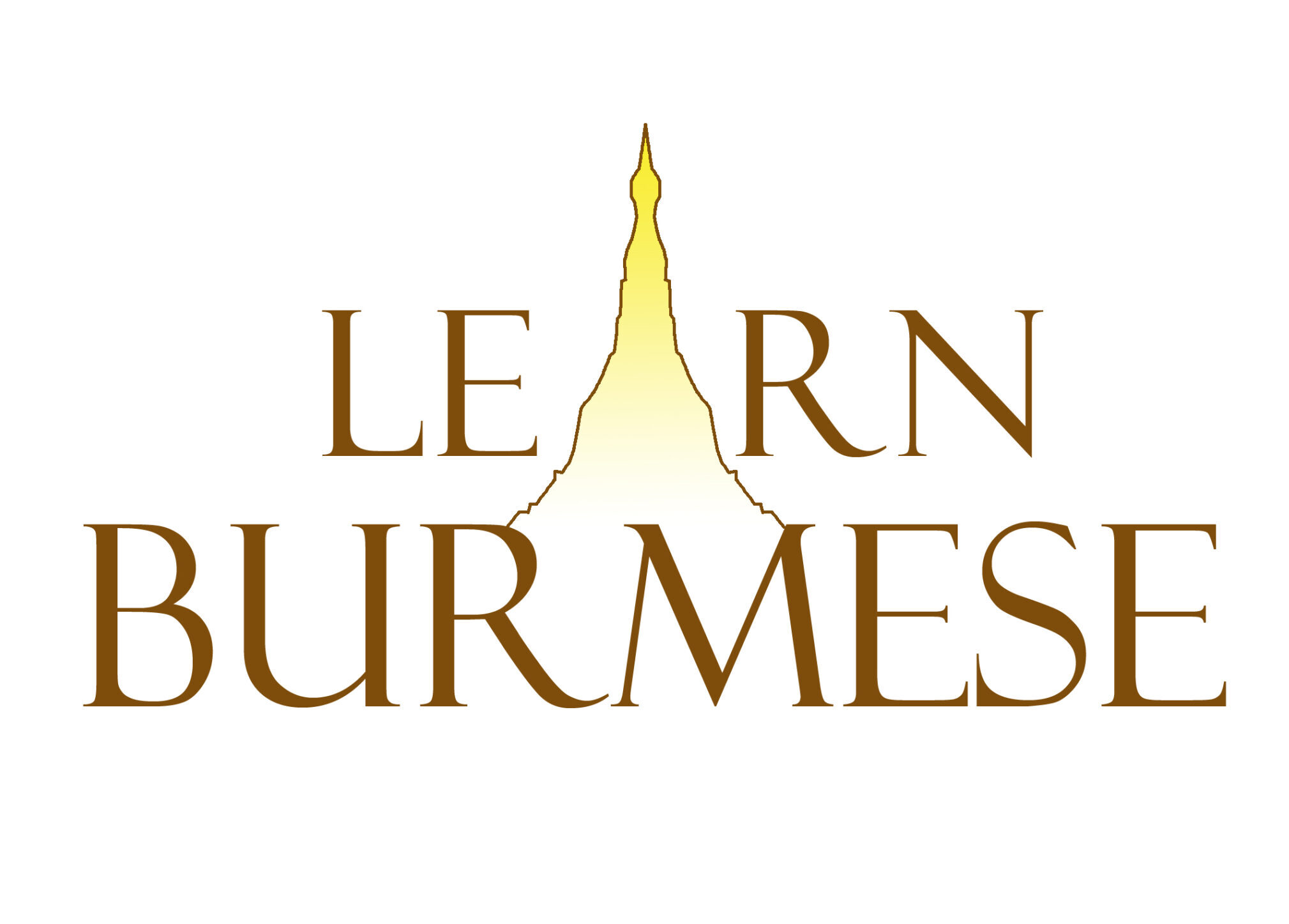Beginners’ Burmese I
Course Fee
S$575
Per Person
Course Duration
10 Lessons of 1.5hrs Each
2 to 7 Persons Per Class
Course Start
New Courses Commence Monthly
*For reference only. Individual lesson plans may be subject to change for optimizing the pace of teaching to suit students’ learning
Lesson 1 – The history of Burmese. Romanizing script. Body language. Practicing pronunciation and tones
History
The Burmese script was adapted from the script used by the Mon people sometime in 1100AD. The Mon script in turn had been derived from another script devised and used in India between 500BC and 300BC. Many languages of India and Southeast Asia are derived from the same source, so although Burmese, Thai, Khmer etc. might not look similar initially, the share many common features. Our teacher will elaborate further on how the usage of Burmese has changed over the course of history – from long poems in the days of the kings, to contemporary publishing in modern culture.
Romanizing Burmese script
The romanizing of Burmese words to be written in English has been attempted ever since Western visitors encountered the Burmese. New Burmese learners who have not yet learnt to read Burmese script will need a method of representing Burmese sounds in roman letters. There is little agreement on how the sounds of Burmese should be spelled in English and that any romanization system, however carefully designed, cannot avoid using some letters that stand for one sound in English and another in Burmese. In this lesson, students will get used to one simple romanization system and get ample practise to produce the required sounds.
Appropriate body language
Every culture has its own set of conventional signs and gestures that show respect and cause offence. For example, one should not touch people on the head or point their feet towards a senior person. Our teacher will share further pointers to ensure that students understand the appropriate body language.
Pronunciation and tones
The pronunciation of Burmese words in conversation can sometimes be very different from what is actually written. That means words can take on dual pronunciation. For instance, the written word for “please” is “pah” (plaintone as in like “bar” in English), and can also be pronounced as “bah”.
In this first lesson, students will be introduced to the three main tones of Burmese words which will form an important foundation for future speech and vocabulary. The tones will be practised using a range of verbs and nouns to demonstrate how the three tones remain fundamental despite differences in meaning and sound.
- Ka (first tone “1”) – dance
- Kah (2) – shield
- Kar (3) – car
- Aung (1) – ache
- Aung (2) – pass
- Aung (3) – hibernate
- – a short tense tone
- – plain relaxed tone
- – long heavy drawn tone
- – sharp reduced minor tone
Lesson 2 – Greetings and civilities
No conversation could possibly proceed without an initial exchange of pleasantries between people meeting for the first time or friends. Students will find the content of this lesson particularly useful in breaking the ice with natives and it gives genuine pleasure to many Burmese to find that you have taken the time and trouble to master a few words in their lingo.
In this lesson, students will learn the use of masculine and feminine personal pronouns like “kya-nor” and “kya-ma”; simple greetings such as “hello” and “how are you”; introducing oneself; asking names; apologizing; simple questions and answers; and the use of affirmatives such as “dair” and question particles like “lar” and “lair”.
- Min-ga-lah bah – (May it be) auspicious (used as a common greeting)
- Nay kaung bah yair lar – How are you?
- Twai ya dah wan-thah bah dair – Glad to meet you
Lesson 3 – Conversation
Following an initial exchange of pleasantries, it would feel rather awkward for your dialogue with a native to simply end there, wouldn’t it? To start things off, the use of personal pronouns for male and female speakers as an important part of speech will be discussed, along with the use of particles in affirmative and non-affirmative statements. Students will also be introduced to the basics of asking questions. In addition, the variety of ways of addressing others using honorifics and kinship titles will be discussed. Every social relationship, whether between a student and teacher; disciple and monk; child and parent; worker and boss; friend and friend – involves different forms of address.
- Ah ko – elder brother
- Nyi ma – younger sister
- U (pronounced “oo”) – uncle
- Daw – auntie
- Pu dair nor – It’s hot, isn’t it?
- Ain-thah bair ma-lair – Where is the toilet?
Lesson 4 – Interrogative Words
A continuation from lesson 3, students will learn how to further their conversations with common small talk themes. Students will also learn the key words of “how”, “what”, “when”, “where”, “which”, “why” and “who”, which form the foundation in structuring almost any question in Burmese.A range of common verbs and their usage will also be taught.
- Bah car ma-lair – What will you eat?
- Lay zaik goh bair loh thwar ya ma-lair – How do I get to the airport?
- Eh-da bah lair – What is that?
- A-loke nair lah tha-lar – Are you here on business?
- Lah bah – please come
- Thwar bah – please go
Lesson 5 – Revision and quiz
What is not revised frequently tends to be forgotten quickly. Hence this lesson aims to offer a recap of lessons 1 to 4 where each student will have an opportunity to put to practise what they have learnt by giving a short presentation on a selected topic to the class.
A quiz with short answer questions will also be given to allow students to track their progress and the quiz answers discussed at the end of the lesson.
Lesson 6 – Numbers
Counting is probably the first math concept most of us encountered since starting school. More likely than not, a traveller to the country – whether in the big cities of Yangon or Mandalay, or the countryside – will need to be able count and recognize numbers to negotiate fares with a taxi driver, ask for prices from street vendor, negotiate business deals, settle a bill in a restaurant and so on.
Students will learn to structure and pronounce numbers from one to more than a million(s). The usage of numbers in ordinal numbers (e.g. first, second), ages, currencies and addresses will also be discussed.
- Tit – one
- Pa-hta-ma – first
- Hna-yar – two hundred
- Ta-thane – one hundred thousand
- Da-zone – a pair
Lesson 7 – Classifiers
As a follow up from the previous lesson on numbers, the use the classifiers will be taught in this lesson. A classifier is a word used to count discrete items and usually used after a number. For example, instead of asking for three bottles of Coke, one would ask for “Coke three bottles”. Using the correct classifier for different items forms an important part of appropriate language use. A range of classifiers and their appropriate use will be discussed.
- Hotdog ta khu – one hotdog
- Coke ta lone – one bottle of Coke
- Lu ta yauk – one person
- Ka ta cee – one car
Lesson 8 – Day and time
Once past niceties and small talk, you may now need to make an appointment to meet again with a friend or business associate or make advance transport arrangements with a taxi driver to visit several tourist attractions.
In this lesson, students will learn the terms for the days of the week. For instance, unlike in Mandarin where the days of the week can simply be referenced with numbers with a set prefix, each day from Monday to Sunday has a specific name in Burmese.
The times of the day, type of seasons and other chronological references will be discussed and students will learn how to construct appropriate questions and answers.
- Boke da hoo – Wednesday
- Ca nay – Saturday
- Ma nai – yesterday
- Moe u du – rainy season
- Ma nai ga bah nai lair – What day was yesterday?
Lesson 9 – Appointments
A continuation from Lesson 8, this lesson will teach students to use the date and time references learnt to construct further questions and answers.
- Ma net caw caw lah bah – Come in the early morning
- Thu doh pyan thwar bi – They have gone back
- Bair daw pyan thwar leh? – When are we going back?
- Nya nay chauk nah-yi twai ya aung – Let us meet at 6 o’clock in the evening
- Ta-ninn lah nai kay-ma goh lah twai bah shin – Please come and see me on Monday
Lesson 10 – Putting it all together!
This lesson will allow students to recall all vocabulary, grammar, sentence construction learnt through the past nine lessons. Students will also be encouraged to demonstrate how they will use their newly found Burmese language skills to creating dialogue concerning work, family, recreation, negotiation and so on.

